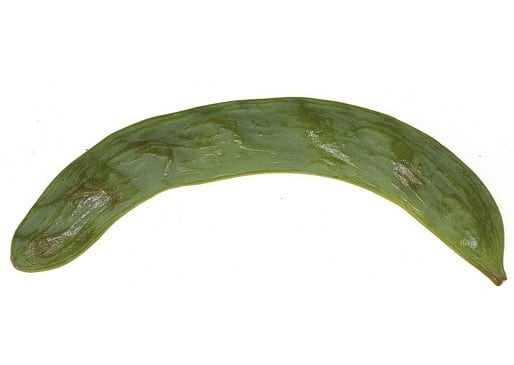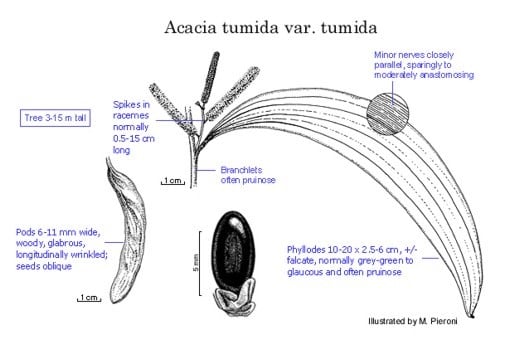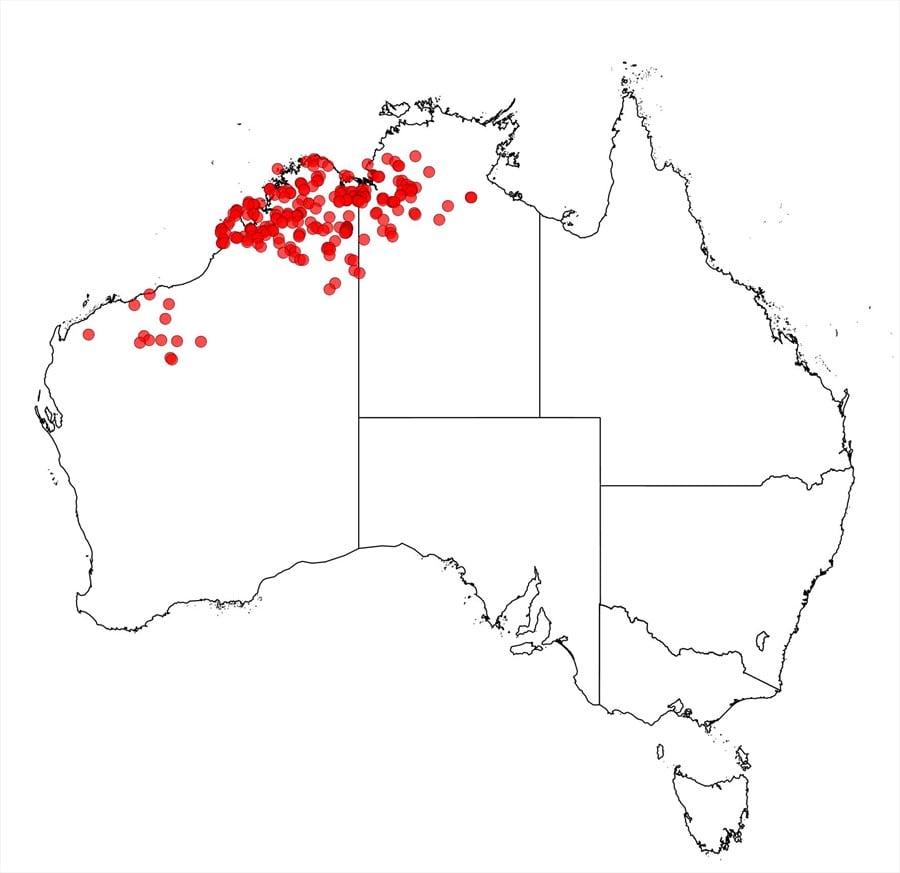Acacia tumida F.Muell. ex Benth. var. tumida
WATTLE
Acacias of Australia
Common Name
Pindan Wattle, Sickle-leaf Wattle and more, fide M.W.McDonald, loc. cit. 158
Family
Fabaceae
Distribution
Occurs in the Kimberley region of W.A. extending from Broome E to the Victoria R. district in N.T.
Description
Tree 3–15 m high, normally single-stemmed with a well-developed trunk, crown dense. Bark grey and fissured on trunks, smooth and usually pruinose on upper branches. Branchlets commonly pruinose, not flexuose. Adult phyllodes lanceolate-falcate or sometimes sub-falcate, 10–20 cm long, 25–60 mm wide, normally pruinose and grey-green to glaucous, sometimes green. Peduncles 2–12 mm long; spikes 2–7 cm long. Pods normally straight to curved, sometimes openly coiled, 6–11 mm wide. Seeds 6–7 mm long, 3–4 mm wide.
Phenology
Flowers June.–July., sometimes May.–Aug.
Habitat
Grows on acid soils (sand to loam or clay-loam) in woodland dominated by Corymbia spp. and various species of Acacia, fide M.W.McDonald, op. cit., 157.
Specimens
W.A.: 90.4 km from Drysdale R. crossing towards King George R., K.Hill 4098 & L.Stanberg (CANB, NSW, PERTH); 10.9 km S of Halls Creek turnoff on the Great Northern Hwy, M.D.Tindale 10140, P.Munns & R.Turley (B, BRI, CANB, MO, NSW, UC). N.T.: 118.2 km SW of East Baines R., Victoria Hwy, M.D.Tindale 10128, P.Munns & R.Turley (B, DNA, NSW); 75 miles [120 km] WNW of Tanami, C.Dunlop 2322 (DNA, NSW).
Notes
The concept of A. tumida var. tumida by M.W.McDonald and B.R.Maslin, in B.R.Maslin (coordinator), WATTLE Acacias of Australia CD-ROM (2001), included also the entity now recognized as A. tumida var. pilbarensis.
Normally distinguished from the other varieties of the species by a combination of its larger habit, larger, falcate phyllodes and longer spikes. In a few places in the Kimberley region A. tumida var. tumida putatively hybridizes with A. eriopoda, e.g. Broome, c. 0.5 km S of golf course, B.R.Maslin 7226 (CANB, DNA, PERTH) and A. monticola, e.g. Gantheaume Point, Broome, T.Willing 50, PERTH (this entity has the phrase name Acacia sp. Riddell Beach (T.Willing 71).
A relatively fast growing variety with a life span probably rarely exceeding 20 years; it is killed by fire (regeneration from seed), is cultivated in a number of countries abroad and is used in various ways by Australian Aborigines; see M.W.McDonald, Australian Systematic Botany 16(2): 158 (2003), for details.
Non-pruinose plants occur sporadically throughout the range of the variety; these are the most common form of the species found on the Dampier Penin., N of Broome.
FOA Reference
Data derived from Flora of Australia Volumes 11A (2001), 11B (2001) and 12 (1998), products of ABRS, ©Commonwealth of Australia
Author
B.R.Maslin
This identification key and fact sheets are available as a mobile application:
URL: https://apps.lucidcentral.org/wattle/
© Copyright 2018. All rights reserved.
















